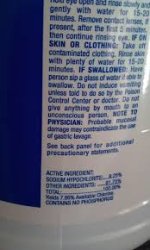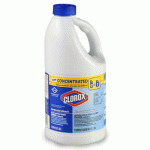Unfortunately I believe thats not true anymore. Thats what I'm finding out now. Thats why the chart that I had is now incorrect and my dosage is way too strong. If I remember correctly, the old number for the active ingredient (the chlorine) was 5.25%. Sorry if the picture is fuzzy, I just quickly googled it, but its now 8.25%:

Notice the yellow band stating Concentrated? Thats all I can find in the aisles now at walmart, lowes, home depot, etc. All stating the new 8.25% concentration. I'm not a math whiz, so I don't know how much to add now, but it would seem MUCH less


Notice the yellow band stating Concentrated? Thats all I can find in the aisles now at walmart, lowes, home depot, etc. All stating the new 8.25% concentration. I'm not a math whiz, so I don't know how much to add now, but it would seem MUCH less
